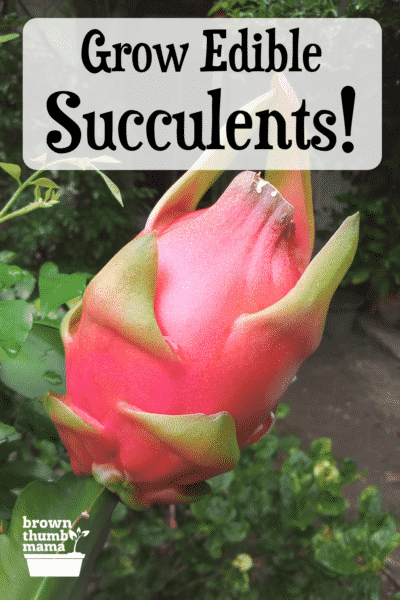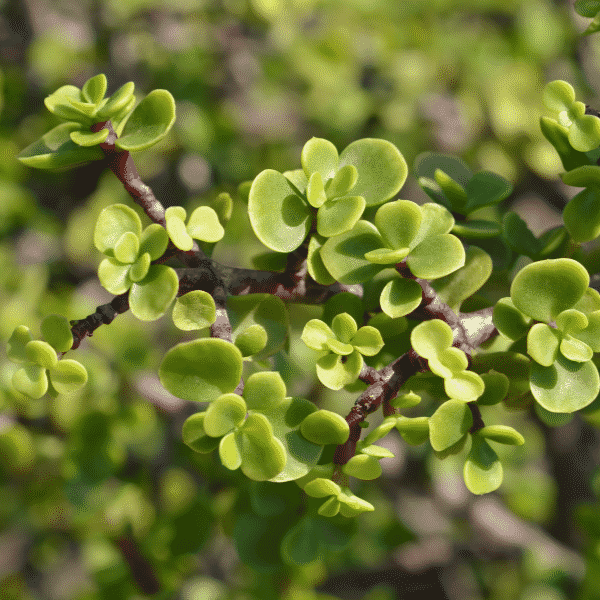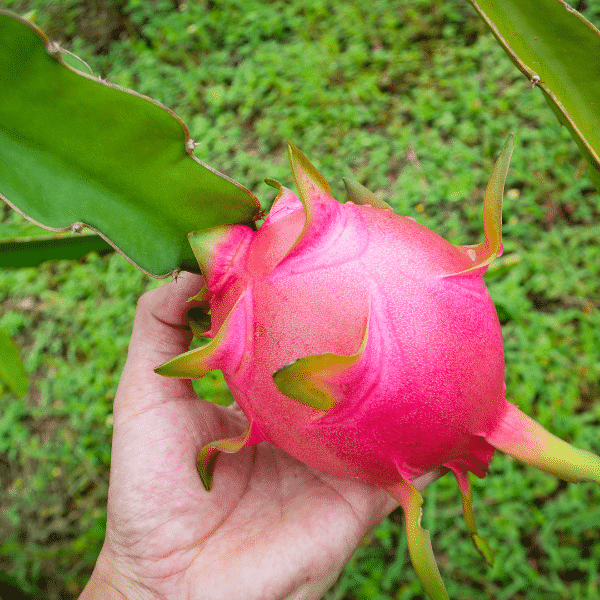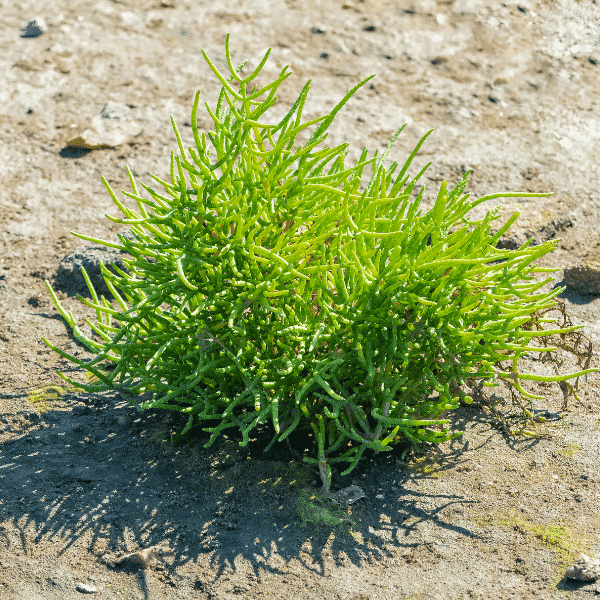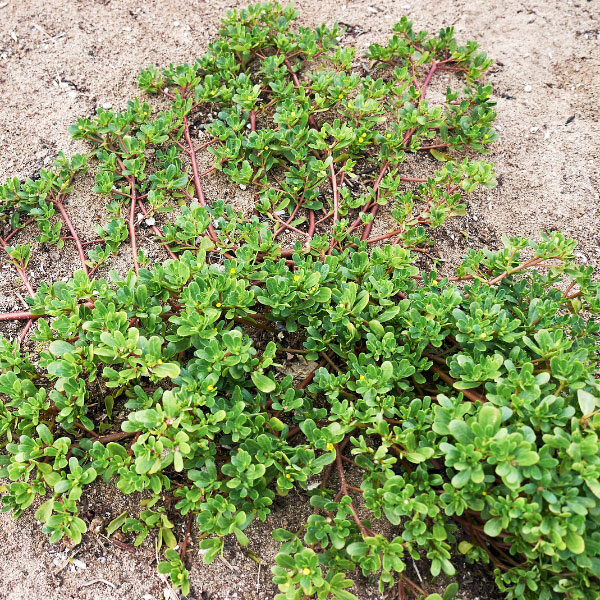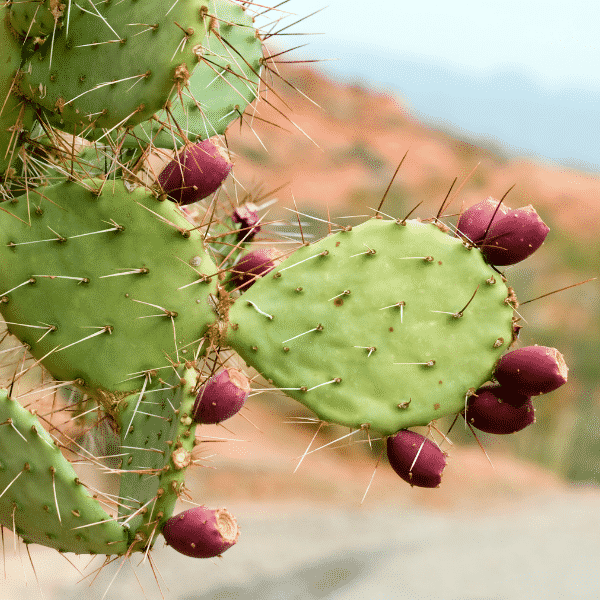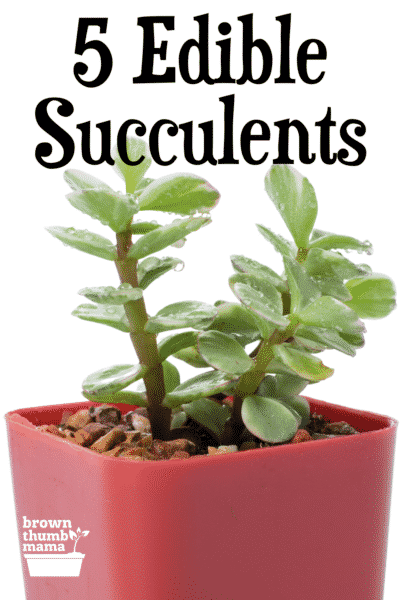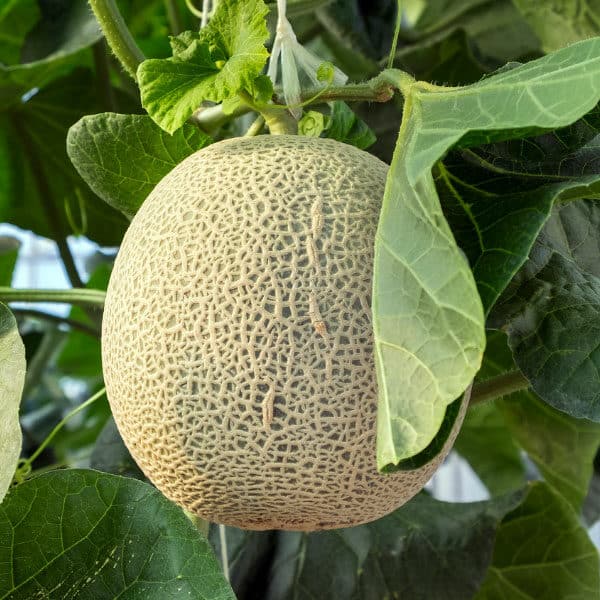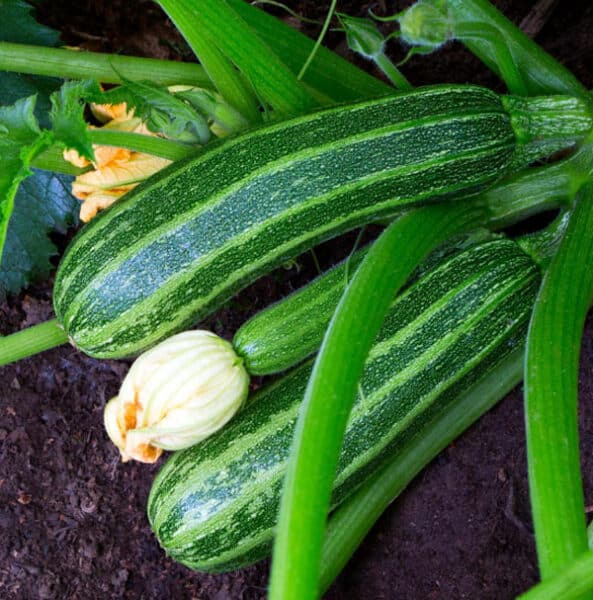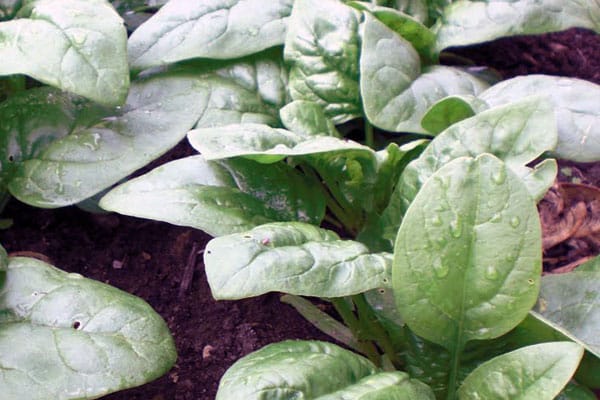This post may include affiliate links.
If you make a purchase, I'll earn a small fee at no extra cost to you.
Growing succulents is popular–but did you know that you can eat some types of succulents? These 5 succulents are tasty and nutritious for stir-frying, smoothies, and more.
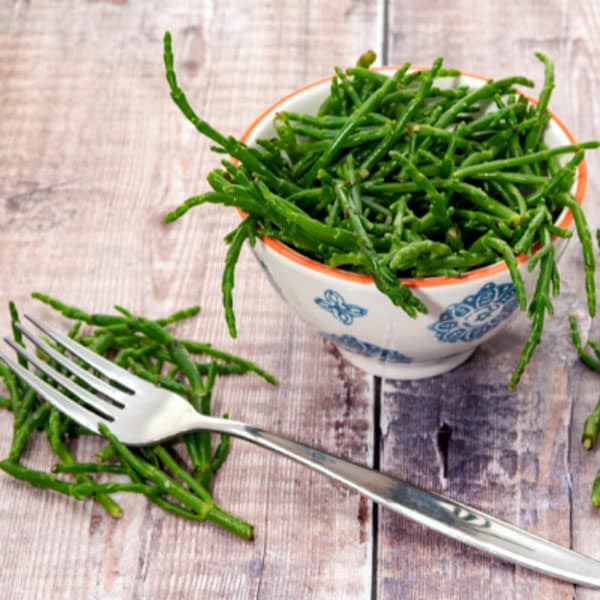
Growing succulents are all the rage right now. It seems like you can’t spend a minute on Instagram without seeing a zillion of them.
Does it surprise you to hear that some succulents are edible? Now don’t go out and gnaw on the hen and chicks (Echeveria elegans) that are in your garden. Not all succulents are edible!
That said, these edible succulents can easily be grown indoors so you can grow your own food even if you have limited outdoor space.
I bet you’ll recognize some of these, because they’re probably growing in your yard right now (I’m looking at you, #4). Check these out:
Elephant Bush (Portulacaria afra)
Elephant Bush is an easy-to-grow edible houseplant native to South Africa. Its firm, green leaves make an excellent addition to a variety of meals.
How to Grow Elephant Bush Indoors
Elephant Bush was given its name because, yes, elephants love to make a snack out of this succulent! It’s also very easy to grow inside.
- Elephant Bush grows best with indirect sunlight, so it can be placed in any bright room.
- Well-drained soil is a must for this edible succulent. Soil rich in sand and pumice is ideal.
- Place in an unglazed pot so excess water can evaporate away.
- Allow soil to dry between waterings, about every 4-5 days and just enough to moisten the soil.
How to Eat Elephant Bush
- Elephant Bush leaves are rich in vitamin C and taste a bit sour. These leaves have long been used in traditional medicine to treat minor ailments.
- Their juicy, tangy flavor make them a perfect addition to soups and salads.
- Add a small handful of Elephant Bush leaves to your next smoothie for a boost in nutrients!
Dragon Fruit (Pitaya)
Dragon Fruit is part of the cactus family and is easily recognized by its edible fruit with bright pink skin and white flesh peppered with tiny black seeds. It’s a larger succulent that’s perfect for growing indoors in a large planter.
How to Grow Dragon Fruit Indoors
Dragon Fruit prefers a warm, dry growing environment so it’s easy to maintain as a houseplant.
- Choose a planter that’s at least 10-12 inches deep (about 5 gallons in size) for your Dragon Fruit plant.
- Potting soil should be a sandy, well-draining mix.
- Dragon Fruit needs about 6-8 hours of sunlight per day, so place your planter near a sunny window. More light equals more fruit!
- Although it’s a cactus and can tolerate dry conditions, give your Dragon Fruit about one inch of water per week to keep fruit production up.
- Soil should be moist but not wet, and it should dry between waterings.
How to Eat Dragon Fruit
- Dragon Fruit is very easy to enjoy: simply cut in half and eat the flesh with a spoon! (The skin is not edible, just the fruit inside.)
- You can also scoop out the flesh and use it in smoothies.
- Puree the flesh of a Dragon Fruit and use in sauces, puddings, ice cream, popsicles, and baked goods.
- You can also chop the inside of a Dragon Fruit to add to veggie and fruit salads.
Common Glasswort (Salicornia)
This annual edible succulent is common to coastal grass marshes, so it loves sandy beaches and salty water.
How to Grow Glasswort Indoors
Glasswort can be difficult to grow, but with a little work it can flourish indoors.
- While this edible succulent is often used in coastal landscaping outdoors, it makes a good houseplant too.
- It’s not very frost tolerant, so if you live in a colder climate, it’s actually best to grow Glasswort indoors.
- Place your Glasswort near a window that gets a lot of sun.
- Unlike most succulents, Glasswort loves regular watering (about ½ cup of water per week) as long as it’s grown in well-drained, alkaline soil.
- Glasswort prefers a saline water solution, with ¼ teaspoon of salt dissolved into ½ cup water.
- Aside from snails, it’s resistant to most pests and diseases.
How to Eat Glasswort
- Glasswort is so well known as an edible succulent, it’s also called Sea Asparagus or Sea Beans.
- Glasswort has a naturally salty flavor, so it makes a great garnish for fish and other seafood and meat dishes.
- Glasswort can be chopped fresh and added to salads.
- You can sauté Glasswort in butter and serve it like asparagus.
- It can also be pickled in vinegar and used as a condiment.
Purslane (Portulaca oleracea)
Purslane is sometimes considered a weed, but it’s actually a succulent and an edible one too! It could be growing in your garden right now. Purslane often shows up on microgreens lists as a powerful superfood.
How to Grow Purslane Indoors
Purslane is hardy and can easily be grown indoors. You can harvest its leaves all year long for a variety of recipes.
- Purslane grows quickly and can be cultivated from seeds or cuttings.
- Sprout purslane just like you would most seeds – sprinkle seeds into moist soil and cover lightly (they’ll need light to germinate). Seedlings will sprout in 7-10 days.
- As your seedlings grow, thin your plants so they’re 8 inches apart or divide into separate pots.
- Purslane loves warmth and sun, so keep it near a sunny window.
- This edible succulent isn’t too picky about soil but will thrive best in porous soil.
- One deep water per week is plenty. Soil should be moist, drying out slightly between waterings.
How to Eat Purslane
- As soon as your Purslane has lots of green leaves, you can start harvesting.
- Purslane leaves have a salty, lemony flavor that makes them perfect for savory dishes.
- Wash leaves and stems, and use them like you would spinach in salads.
- Purslane is an excellent garnish for fish and meat.
- You can also make a delicious pesto with Purslane leaves.
Prickly Pear (Opuntia)
Another common member of the cactus family, Prickly Pear succulents offer up nutritious leaves (pads or nopales) and colorful fruits for harvest. But beware of the “prickly” part of the Prickly Pear!
How to Grow Prickly Pear Indoors
The Prickly Pear is probably the most recognizable cactus with large, paddle-like leaves and colorful fruit. With the right conditions, this edible succulent can easily be grown indoors.
- Prickly Pear loves light and needs to be placed next to a sunny window, preferably facing south or west.
- This is a very drought-tolerant plant that prefers dry conditions. Only water every 2 weeks when the soil is completely dry. Water just enough to moisten the soil.
- Prickly Pear needs very well-drained soil. Gravely or sandy soil is a good choice.
- These cacti don’t like temperature fluctuations, so keep them away from heating and cooling vents.
- These plants mature slowly and will not produce fruit for 3-4 years. Start with a mature plant if you want fruit sooner.
How to Eat Prickly Pear
- Prickly Pear has been a staple in Mexican and Native American dishes for centuries. It’s known for its restorative properties.
- The trickiest part of eating Prickly Pear are the needle-like spines that grow all over the plant. You’ll need thick gloves for harvesting and removing the spines.
- Remove spines by peeling the pads with a potato peeler or burning them off with a blow torch.
- The leaves, or pads, are eaten like a vegetable. They taste similar to green beans when cooked, with a slightly slimy texture like okra. Cut them into strips or cubes and season them well with salt and pepper. Grill or sauté and serve as a side dish.
- Handle the fruit with gloves and tongs until all the spines are removed. To remove spines, put several fruits in a colander and rinse under cold water, swirling the fruits around gently. This will remove most of the spiky bits, but carefully inspect before peeling.
- Cut the ends off the Prickly Pear fruit and then stand up vertically and use a knife to remove the rest of the peel. The fruit can then be chopped and blended into smoothies. You can also use Prickly Pear fruit to make jams or jellies, sorbet, or syrups.

